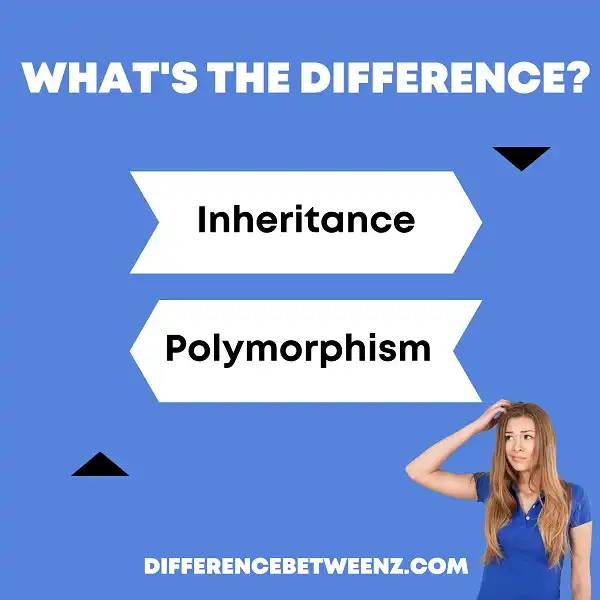Before delving into the differences between inheritance and polymorphism, it is important to first understand what each one is. Inheritance allows you to create a new class that is based on an existing class, while polymorphism enables you to treat different types of objects as if they are all of the same type. With that in mind, let’s take a closer look at the key distinctions between these two concepts.
What is Inheritance?
Inheritance is the process by which an object acquires the properties of another object. In Inheritance, one object is said to be the parent of another object. The child object inherits the properties of the parent object. Inheritance is a key concept in Object-Oriented Programming (OOP). It enables code reuse and makes it easier to maintain and modify existing code. Inheritance also facilitates polymorphism, which is the ability of an object to take on different forms. Inheritance is best understood through an example.
Consider a class of objects called shapes. A shape has certain basic properties, such as size and color. Inheritance enables us to create subclasses of shapes, such as circles, squares, and triangles. Each subclass inherits the basic properties of a shape but also has its own unique properties. For example, a circle has a radius, while a square has four sides. Inheritance enables us to create more complex classes by building on existing classes. It is a powerful tool that can be used to model real-world relationships.
What is Polymorphism?
- Polymorphism is the ability of an object to take on many different forms. The word comes from the Greek “poly,” meaning many, and “morph,” meaning form. Polymorphism is a key concept in object-oriented programming (OOP). It allows for code reuse and makes code easier to read and maintain. Polymorphism can be achieved in two ways: through inheritance or by using interfaces. When using inheritance, a base class defines the general characteristics of an object, while derived classes define specific characteristics. This is known as subtype polymorphism.
- For example, a base class of Vehicle might be inherited by classes such as Car, Truck, and Boat. Each derived class would add its own unique properties and methods, but all would share the properties and methods of the base class. Polymorphism can also be achieved through interfaces. An interface is like a template that defines the methods that a class must implement.
- A class can implement multiple interfaces, each with its own set of methods. This is known as ad hoc polymorphism. Polymorphism is a powerful tool that can be used to write clean and concise code. When used correctly, it can make code more readable and easier to maintain.
Difference between Inheritance and Polymorphism
Inheritance and polymorphism are two important concepts in object-oriented programming. Inheritance allows a class to inherit the attributes and behavior of another class, making it easy to create new classes that are similar to existing ones. Polymorphism, on the other hand, allows a class to override the behavior of another class, providing a way to customize the behavior of an inherited class. Inheritance and polymorphism are related concepts, but they serve different purposes. Inheritance is used to create new classes, while polymorphism is used to customize the behavior of existing classes.
Conclusion
Inheritance and polymorphism are two different but related concepts in object-oriented programming. Inheritance allows one class to inherit the properties of another class, while polymorphism lets a single function work with objects of multiple types. While inheritance is a more basic concept, polymorphism is what makes object-oriented programming powerful. Understanding these concepts will help you write more efficient and reliable code.


